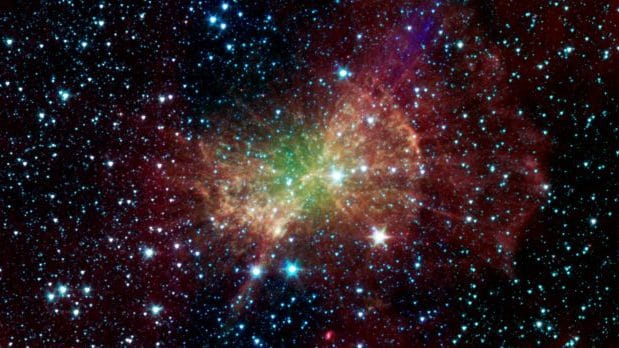Bengaluru: Scientists have found that the universe is expanding at a much faster rate than previously estimated.
By using the Hubble Space Telescope, researchers have found that the universe is expanding 9 per cent faster than expected, according to findings published in the Astrophysical Journal.
The calculations were done based on readings made by the Hubble telescope and the Araucaria Project, a collaboration between astronomers from institutions in Chile, the US and Europe.
Also read: First ever quake detected on Mars by NASA’s InSight lander
Hubble Constant
Calculating the expansion of the universe requires measuring movements of clusters of galaxies. Imagine multiple dots drawn on a deflated balloon. Now when one blows up the balloon, its expansion causes each of these dots to move away from each other in different directions. The dots aren’t physically moving, but the space between two dots is expanding rapidly, causing the dots to appear to move away from each other. The farther away something is, the faster it appears to move away. This, in essence, is Hubble’s Law.
The Hubble Constant measures this law in numbers. How far something appears to move away actually depends on how far away it is. The Hubble Constant is one of the most important numbers in cosmology, needed to determine the rate of expansion of the universe.
In astronomical scales, the distances for this value are measured in ‘megaparsecs’. One megaparsec (Mpc) is 3.3 million light years in distance. A galaxy that is one Mpc from Earth appears to move at the rate of 67 km per second, the previously accepted value of the Hubble Constant. A galaxy that is two Mpc or 6.6 million light years away appears to move twice as fast.
The previous value of the Hubble Constant — 67 km/sec/Mpc — had a margin error of 2.2 per cent. The new observation has tightened this margin to 1.9 per cent and has come up with a more certain value of 74 km/sec/Mpc, which is a whopping 9 per cent faster.
Also read: New sight from space, floating plastic islands
How is the rate measured?
To measure the Hubble Constant, astronomers require two pieces of information — how far a galaxy or a cluster of galaxies is from Earth and how fast it appears to move away.
To measure how far away a galaxy is, astronomers use certain ‘variable’ stars — stars that dim and brighten at regular intervals — as reference points. These are called Cepheid Variables. They undergo changes in their brightness in regular pulses, and the average brightness of such a star can be determined by its pulse rate. The brighter it is, the slower it pulsates.

By measuring a Cepheid’s pulse rate, astronomers can calculate the actual brightness or luminosity of a star. Researchers can then compare that with the brightness observed and then infer how far the star is and thus the galaxy’s distance.
This data can be extrapolated to calculate what is known as a ‘cosmic distance ladder’. Astronomers first measure accurate distances to the galaxies closest to Earth, then move further and further away.
As groups of galaxies move away from Earth, the light that comes from them is stretched out and becomes ‘red-shifted’ because of the expansion of space between Earth and the galaxy.
Studying the spectrum of a galaxy and how red-shifted it is gives researchers an estimate of the speed at which it is moving. The faster it moves, the more the red-shifted it is.
Why this mysteriously faster rate of expansion?
It is unclear why the rate of expansion is much faster than expected, but scientists have three theories, according to NASA.
One is that the hypothesised, mysterious dark energy, which is thought to have existed since the time of the Big Bang, is actually pushing matter away.
Another idea is that there might be a new subatomic particle that researchers are still aren’t aware of, which travels near the speed of light. These particles make up the hypothesised ‘dark radiation’.
A third explanation is that the dark and invisible matter that is not comprised of protons, neutrons, and electrons — of which all known matter in the universe is made — likely interacts more strongly with regular matter.
It is likely that a new physics would be needed to study the expansion of the universe and what causes it to progress at the rates it does.
Also read: Scientists detect the first-ever molecule of the universe







According to scientists ( Big Bang Theory) age of an universe is 13.772 billions years ( www. Space.com) so it’s quite understandable that if we want to slove entire mystery of an universe then for us definitely it will take 13.772 billions years.
Thanks for a very good article. The only thing that moves faster than light is the universe itself. After one billion years from now, if the human race manages to survive, the sky will be very different. Many galaxies will be invisible.